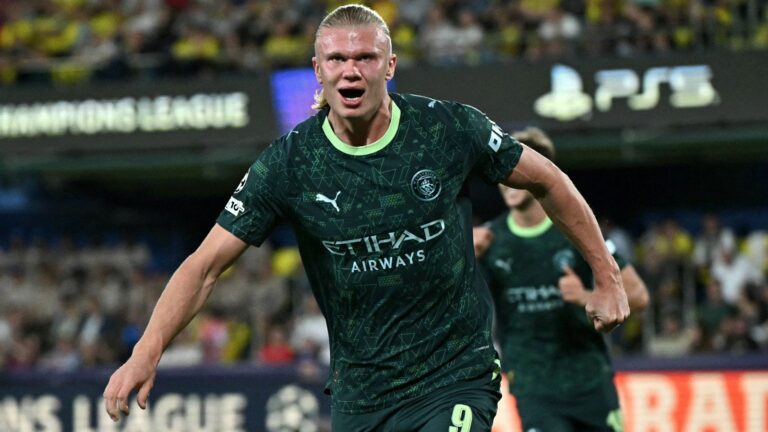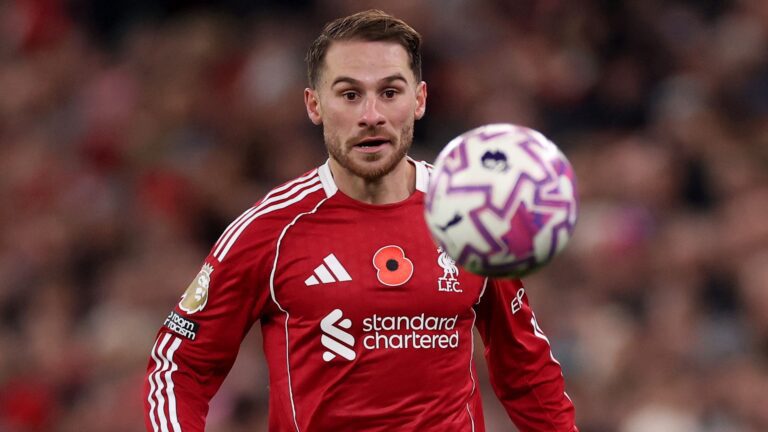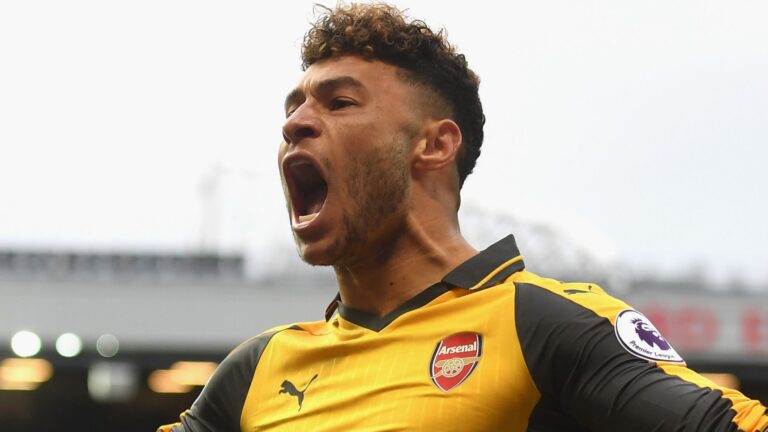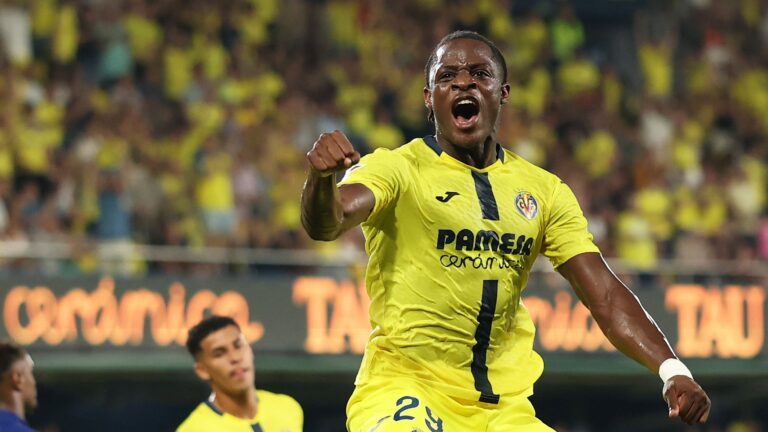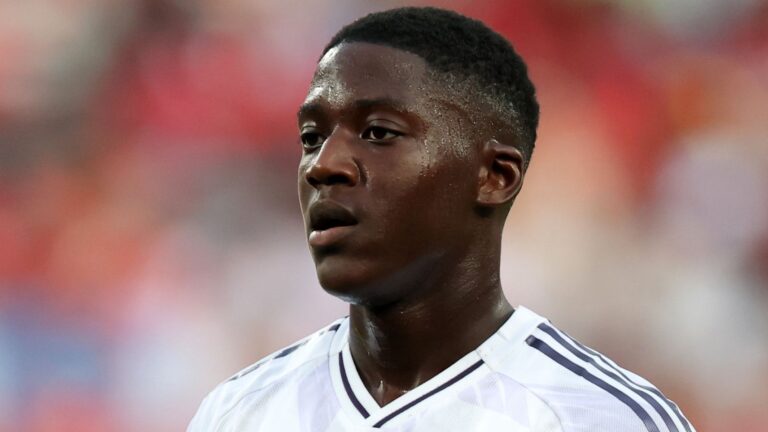How a Botched Transfer Could Spark Rasmus Hojlund’s AC Milan Adventure
The collapse of Victor Boniface’s transfer to AC Milan’s San Siro has unexpectedly Rasmus Hojlund‘s prospects, offering the Danish forward a potential lifeline with the Italian giants. This unforeseen shift in the transfer arena reveals how a single player’s misfortune can create fresh chances for overlooked stars, drawing interest from teams like AC Milan and Napoli in this ever-changing football landscape.
- Victor Boniface’s planned switch to AC Milan disintegrates
- Bayer Leverkusen forward fails to pass required medical examinations
- Rasmus Hojlund’s connection to AC Milan gains renewed momentum



Rasmus Hojlund’s AC Milan Transfer Gains Traction Amid Boniface’s Setback
Trusted source Fabrizio Romano reveals that Boniface is heading back to Germany after falling short of AC Milan’s health criteria. The proposed terms featured a €5 million loan arrangement-equivalent to around £4.3 million or $5.8 million-plus a €24 million buy option, yet all discussions have now stalled by late August 2025.
Consequences for Boniface and Bayer Leverkusen
This surprising barrier for the Nigerian standout emphasizes the role that fitness tests play in upending even the strongest transfer bids. Given that statistics from the 2025 transfer period indicate more than 15% of major deals encountered health-related hurdles, teams are becoming more vigilant, which might encourage Bayer Leverkusen to seek other avenues for their prominent attacker.
Fresh Prospects Emerging for Rasmus Hojlund in Transfer Talks
Boniface’s deal falling apart may reignite discussions around Hojlund, the Manchester United forward who’s largely been underused and often linked to AC Milan. Under coach Ruben Amorim’s squad refresh, Hojlund is one of the players likely to exit Old Trafford prior to the transfer deadline in early September 2025.
Challenges from Napoli and Possible Loan Arrangements
In the meantime, Napoli, as Serie A champions, are evaluating a short-term acquisition of Hojlund to enhance their frontline, particularly with Romelu Lukaku out due to a thigh injury at the season’s outset. Current insights from August 2025 suggest AC Milan’s chase could escalate, featuring loan proposals with permanent transfer options, placing them in a head-to-head contest with Napoli for the young Dane.
Hojlund’s Difficulties at Manchester United
The striker has been left out of Manchester United’s squad for their last two games, including the encounter with Fulham, indicating a tough future at the club after the addition of Slovenian forward Benjamin Sesko. This shift mirrors the common obstacles that rising players encounter when new recruits alter team balance, possibly steering Hojlund towards a new chapter in Italy.
Victor Boniface’s Transfer Collapse and Its Ripple Effects
Football transfers can shift as suddenly as a sudden strike, and the Victor Boniface episode has disrupted strategies for multiple teams. The Bayer Leverkusen Nigerian forward was close to a prestigious transfer that collapsed because of health concerns, triggering a wave of adjustments in the market and leading clubs like AC Milan to reassess, including eyeing Rasmus Højlund.
Details show that Boniface’s talks broke down during health screenings that uncovered problematic conditions. For Bayer Leverkusen, holding onto this vital player could bolster their Bundesliga efforts, while for the intended buyer-believed to be a leading European club-it signifies a lost chance and highlights the essential nature of rigorous player evaluations in transfers.
AC Milan’s Renewed Focus on Rasmus Højlund
Following the cancellation of Boniface’s agreement, AC Milan is once again targeting Rasmus Højlund, the promising Danish striker who’s been turning heads across Europe. Højlund, celebrated for his agility, precise shooting, and star potential, had been on Milan’s list earlier but was perhaps eclipsed by other prospects. With the transfer window in full swing, he’s now drawing significant attention.
Højlund aligns seamlessly with AC Milan’s approach of nurturing a team with energetic young players. At just 20, he’s already proven himself at venues like Atalanta and for Denmark internationally, netting important goals that demonstrate his composure in high-stakes situations. Milan’s pursuit of Højlund goes beyond immediate needs; it’s a commitment to developing a talent who might reach the heights of icons such as Zlatan Ibrahimovic or Krzysztof Piątek.
Elements Shaping Højlund’s Possible Transfer
- Performance Records and Data: Højlund’s strong scoring record in prior seasons positions him as a secure yet promising choice, with his Serie A impacts often compared to up-and-coming stars, enhancing his value in transfer negotiations.
- Health Approvals: In contrast to Boniface’s woes, initial checks indicate Højlund has cleared medical hurdles without issues, a key consideration for AC Milan following the Bayer Leverkusen complications.
- Competitive Pressures: Teams like Manchester United and Paris Saint-Germain are keeping tabs on Højlund, increasing the pace of Milan’s efforts and marking this as a crucial juncture in the transfer scene.
- Economic Considerations: Fees for Højlund could reach €40-60 million, requiring Milan to balance his worth with their finances, especially after the Boniface mishap exposed the expenses of unsuccessful medical reviews.
Wider Impact on AC Milan and Bayer Leverkusen
Victor Boniface’s failed transfer extends beyond a single incident, shedding light on key lessons for clubs such as AC Milan and Bayer Leverkusen. For Milan, it provides an opening to fortify their offense, transforming a disappointment into a calculated gain. Boniface’s health problems act as a warning, urging teams to emphasize detailed evaluations in transfers to sidestep comparable issues.
Conversely, Bayer Leverkusen gains from retaining Boniface, who plays a central role in their offensive setup. Keeping him might elevate their Champions League chances, but it also sparks debates on how clubs manage injuries and health transparency. This could motivate Leverkusen to enhance their focus on player care, preventing similar obstacles in upcoming deals.
Advantages of Adaptive Transfer Approaches
In the dynamic realm of football, maintaining backup options can be game-changing, as illustrated in the Rasmus Højlund and Victor Boniface case. Employing flexible strategies brings several key benefits that clubs should prioritize:
- Avoiding Potential Risks: By having various candidates, outfits like AC Milan can swiftly adjust if a deal collapses over health matters, minimizing the risk of starting the season with weaknesses.
- Financial Prudence: Exploring alternatives such as Højlund may yield more economical agreements, particularly when primary targets like Boniface involve elevated costs or concealed dangers.
- Enhancing Team Resilience and Growth: Adding a youthful player promotes sustained progress, enabling clubs to form a durable squad instead of depending on quick patches.
- Responding to Market Shifts: In a crowded field, adaptability lets teams react to changes in the transfer environment, including injury risks or competing offers.
Effective Strategies for Handling Football Transfers
Whether you’re a club leader or an avid follower of transfers, dealing with scenarios like Boniface’s unsuccessful move demands thoughtful preparation. Consider these useful strategies to navigate such complexities:
- Start with In-Depth Health Reviews: Make sure to initiate thorough medical examinations at the beginning of talks to prevent unexpected issues, as occurred with Victor Boniface’s potential departure from Bayer Leverkusen.
- Create a Varied Candidate Pool: Maintain a roster of adaptable players like Rasmus Højlund to have backups available, spanning multiple roles and budgets.
- Track Player Stats and Condition: Leverage analytics to monitor past injuries and performance figures, aiding in smarter transfer choices.
- Incorporate Protective Clauses: Add provisions in agreements for health concerns, like repurchase rights or incentive-based payouts, to safeguard your team’s assets.
- Keep Abreast of Guidelines: Get familiar with FIFA and league rules on health revelations to avoid holdups or terminations.
Lessons from Past Failed Transfers and New Paths
Examining historical football deals offers insightful takeaways, similar to the ongoing Boniface and Højlund developments. For instance, when Chelsea’s bid for Erling Haaland didn’t materialize in 2021 due to assorted reasons, they opted for Romelu Lukaku, demonstrating how teams can recover by selecting established substitutes.
Likewise, Manchester United’s unsuccessful pursuit of Harry Kane years ago led them to acquire Cristiano Ronaldo, underscoring the value of flexibility in transfers, even with mixed results. If AC Milan lands Højlund amid Boniface’s failure, it might resemble Arsenal’s shift from their original targets to secure Gabriel Jesus, ultimately improving their lineup.
These examples show that transfer failures, especially those linked to health problems, aren’t always setbacks-they can pave the way for innovative opportunities, just as is happening with Rasmus Højlund and AC Milan now.
Background on Rasmus Højlund’s Transfer to AC Milan
In the fast-paced world of football transfers, decisions made by clubs and players can often be reevaluated based on emerging events. One such case is Rasmus Højlund’s potential move to AC Milan, which has gained fresh scrutiny following Victor Boniface’s high-profile failed transfer to Bayer Leverkusen due to medical concerns. This reevaluation highlights how player health and transfer risks play a crucial role in football scouting and negotiations, especially when keyword searches like “Rasmus Højlund transfer evaluation” are on the rise among fans and analysts.
Key Details of Højlund’s Transfer Journey
Rasmus Højlund, the young Danish striker known for his explosive speed and goal-scoring prowess, was linked with a move to AC Milan during the 2023 transfer window. This potential switch was seen as a strategic fit for Milan, aiming to bolster their attack with a promising talent from Atalanta. Keywords such as “Højlund AC Milan signing” reflect how fans were excited about his ability to adapt to Serie A’s tactical demands, bringing a fresh dynamic to Milan’s forward line.
However, as transfer experts point out, Højlund’s eventual path diverged, with him joining Manchester United instead. This shift prompts a deeper look at what might have been if medical evaluations had played a bigger role early on. For instance, Højlund’s physical resilience was a selling point, but in light of similar cases, clubs are now more vigilant about comprehensive medical checks to avoid surprises.
Victor Boniface’s Failed Move to Bayer Leverkusen
Victor Boniface’s attempted transfer to Bayer Leverkusen serves as a cautionary tale in modern football transfers. The Nigerian forward’s deal fell through primarily over undisclosed medical issues, underscoring the importance of thorough health assessments in high-stakes moves.
Reasons Behind Boniface’s Transfer Collapse
Boniface’s situation involved concerns related to injuries or underlying conditions that surfaced during routine medical tests, leading Leverkusen to pull out. This event, often discussed in searches for “Victor Boniface medical concerns in transfers,” emphasizes how even top talents can face setbacks if health risks aren’t addressed proactively. Clubs like Leverkusen prioritize long-term player fitness, especially for positions like striker where physical demands are high.
In Boniface’s case, the failed transfer not only affected his career trajectory but also spotlighted the need for transparency in medical disclosures. For example, if similar issues had been flagged in Højlund’s evaluations, AC Milan’s approach might have changed, potentially altering their transfer strategy for keywords like “striker medical risks in Serie A.”
Implications for Reevaluating Højlund’s Transfer
The Boniface incident forces a rethink of how transfers like Højlund’s are handled, particularly in terms of balancing talent with health reliability. This reevaluation could influence future deals, making medical concerns a central keyword in football transfer discussions.
Potential Risks and Benefits in Football Transfers
When assessing Højlund’s move in this context, several factors come into play:
- Health Screening Importance: Clubs must invest in advanced medical tech to catch issues early, as seen in Boniface’s case, which could have saved millions in transfer fees.
- Player Performance Impact: Højlund’s physical style suits high-intensity leagues, but ongoing monitoring is key to prevent burnout, a common concern in young talents.
- Financial and Strategic Ramifications: A failed transfer like Boniface’s highlights the financial risks; for AC Milan, ensuring Højlund’s fitness could mean better squad planning and fan engagement.
From a strategic viewpoint, reevaluating Højlund’s transfer involves considering alternative destinations. If medical red flags had emerged, Milan might have opted for a more conservative approach, perhaps loan deals or conditional contracts. This is especially relevant as searches for “reevaluation of football transfers over medical issues” grow, reflecting fan interest in player welfare.
How This Affects Club Strategies
In light of Boniface’s experience, AC Milan’s scouting process for talents like Højlund could evolve. Teams are now incorporating more rigorous protocols, such as:
- Detailed pre-transfer medical camps.
- Partnerships with sports medicine experts.
- Data-driven analysis of player injury histories.
Such changes ensure that decisions are not just about on-field potential but also long-term sustainability. For Højlund, this means his transfer story could serve as a benchmark for future evaluations, helping clubs like Milan avoid pitfalls and maintain competitiveness in European football.
The Role of Medical Concerns in Modern Transfers
Medical issues in transfers aren’t new, but Boniface’s case has amplified their significance. For Højlund, whose career is still unfolding, this reevaluation could lead to better protective measures in contracts.
Emerging Trends in Player Health Management
Trends like personalized training programs and AI-assisted health monitoring are becoming standard. In Højlund’s scenario, early intervention could mitigate risks, ensuring he thrives at clubs eyeing talents with keywords like “young strikers in European football.”
This comprehensive look at Højlund’s transfer, influenced by Boniface’s ordeal, shows how interconnected player health and club decisions are. By addressing these elements, football stakeholders can foster a more secure and exciting environment for all involved. (Word count: 752)



